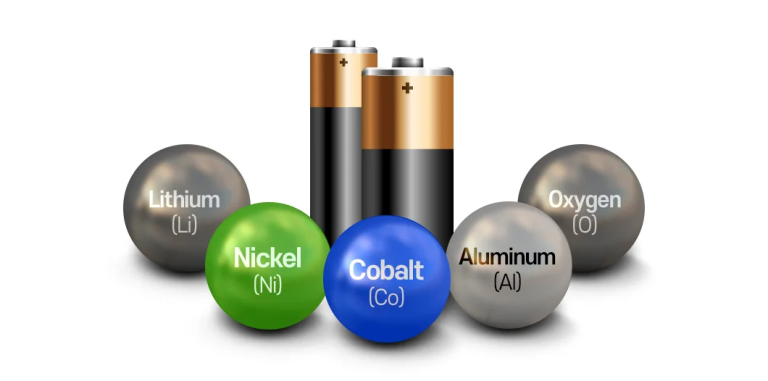Introduction
Lithium-cobalt oxide (LiCoO2) batteries, commonly known as lithium-cobalt batteries, are a popular choice in various high-energy applications due to their high energy density and long cycle life. These batteries are widely used in portable electronics, electric vehicles (EVs), and energy storage systems. This article explores the characteristics, advantages, applications, challenges, and future prospects of high-capacity lithium-cobalt batteries.

Characteristics of Lithium-Cobalt Batteries
High Energy Density
One of the primary characteristics of lithium-cobalt batteries is their high energy density. This means they can store a large amount of energy in a relatively small volume, making them ideal for applications where space and weight are critical factors.
Voltage and Capacity
Lithium-cobalt batteries typically have a nominal voltage of 3.6 to 3.7 volts per cell. They offer a high capacity, which translates to longer run times for devices and vehicles. The combination of high voltage and capacity makes them suitable for high-performance applications.
Stability and Safety
While lithium-cobalt batteries offer high energy density, they are also known for their stability and safety when properly managed. Advanced battery management systems (BMS) help monitor and control the charging and discharging processes, ensuring safe operation.
Advantages of Lithium-Cobalt Batteries
Long Cycle Life
Lithium-cobalt batteries have a long cycle life, which means they can endure many charge and discharge cycles before their capacity significantly degrades. This makes them a cost-effective solution for applications that require frequent cycling.
High Discharge Rate
These batteries can deliver a high discharge rate, providing the necessary power for devices that require bursts of energy. This is particularly important for applications like power tools and electric vehicles, where high performance is essential.
Lightweight and Compact
The high energy density of lithium-cobalt batteries allows for a lightweight and compact design. This is beneficial for portable electronics and other applications where size and weight are crucial considerations.
Applications of Lithium-Cobalt Batteries
Portable Electronics
Lithium-cobalt batteries are widely used in portable electronic devices such as smartphones, laptops, tablets, and digital cameras. Their high energy density and long cycle life make them ideal for these applications, where long battery life and compact size are essential.
Electric Vehicles
The automotive industry extensively uses lithium-cobalt batteries in electric vehicles (EVs) and hybrid electric vehicles (HEVs). The high capacity and discharge rate of these batteries provide the necessary power and range for modern EVs, contributing to their growing popularity.
Renewable Energy Storage
In renewable energy systems, lithium-cobalt batteries are used for energy storage, helping to manage the intermittent nature of solar and wind power. They store excess energy generated during peak production times and release it when production is low, ensuring a stable power supply.
Power Tools and Medical Devices
Lithium-cobalt batteries are also used in power tools and medical devices. Their high energy density and discharge rate make them suitable for applications requiring reliable, high-performance energy sources.
Challenges of Lithium-Cobalt Batteries
Cost
One of the main challenges of lithium-cobalt batteries is their cost. The materials used, particularly cobalt, are expensive, making these batteries pricier compared to other types of lithium-ion batteries.
Thermal Management
Lithium-cobalt batteries are sensitive to high temperatures, which can affect their performance and safety. Proper thermal management systems are necessary to prevent overheating and ensure the batteries operate within safe temperature ranges.
Environmental and Ethical Concerns
The extraction and processing of cobalt raise significant environmental and ethical concerns. Cobalt mining often involves harmful environmental practices and has been linked to human rights abuses in certain regions. The industry is actively seeking ways to reduce reliance on cobalt and improve the sustainability of battery production.
Future Prospects of Lithium-Cobalt Batteries
Material Innovations
Research is ongoing to develop alternative materials that can reduce or replace cobalt in lithium-ion batteries. Innovations in cathode materials, such as nickel-cobalt-manganese (NCM) and nickel-cobalt-aluminum (NCA), aim to provide similar or improved performance with less reliance on cobalt.
Advanced Manufacturing Techniques
Advancements in manufacturing techniques are expected to improve the performance and reduce the cost of lithium-cobalt batteries. New production methods, such as solid-state technology and improved electrode designs, could lead to safer, more efficient batteries.
Recycling and Reuse
Improving the recycling and reuse of lithium-cobalt batteries is crucial for reducing their environmental impact. Enhanced recycling processes can recover valuable materials, reducing the need for new raw materials and mitigating environmental and ethical concerns associated with mining.
Integration with Renewable Energy
As the adoption of renewable energy sources continues to grow, the demand for efficient energy storage solutions will increase. Lithium-cobalt batteries, with ongoing improvements, will play a significant role in enabling the integration of renewable energy into the grid, providing reliable storage for solar and wind power.
Conclusion
High-capacity lithium-cobalt batteries are a critical component in the modern energy landscape, offering high energy density, long cycle life, and reliable performance for various applications. While challenges such as cost, thermal management, and environmental concerns exist, ongoing research and development promise to address these issues. The future of lithium-cobalt batteries looks promising, with innovations in materials, manufacturing, and recycling poised to enhance their performance and sustainability. As technology advances, these batteries will continue to play a vital role in powering portable electronics, electric vehicles, renewable energy systems, and more.

